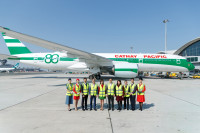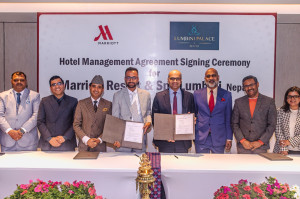Money
Government seeks $200 million from ADB to tide over revenue shortfall
Reforms in public entities, transparency in contracts and timely financial reports are among the bank’s conditions.
Prithvi Man Shrestha
The government has sought $200 million from the Asian Development Bank in budgetary support to finance the resource gap amid falling revenue collection in the current fiscal year 2022-23.
Officials at the Finance Ministry said that the government wants to use parts of the ADB loans to bridge the resource gap in the current fiscal year.
Finance Secretary Toyam Raya confirmed to the Post that the negotiation was ongoing with the ADB to secure budgetary support. He however didn’t divulge how the talks were progressing.
The government is seeking the aid in the form of budget support as it can then use the resources in its own areas of priority.
Such aid is not tied to any specific project. With the government facing a resource shortfall, it wants the budgetary support to bridge the gap wherever it appears.
According to the Financial Comptroller General Office (FCGO), which keeps records of the government’s income and expenditure, the government collected Rs639.59 billion in revenues as of April 7 this fiscal year, which is less than the government’s recurrent expenditure of Rs681.65 billion in the same period.
During the same period last fiscal year, the government had collected a revenue of Rs744 billion.
And there are no signs of revenue collection rising substantially as customs and tax offices report a continued shortfall against the target. This forced the government to rely on external assistance to bridge the resources gap this fiscal year.
Nepal has prioritised receipts of foreign aid as the government's International Development Cooperation Policy (DCP)-2019 states that support to the budget is the country’s most preferred official modality of seeking development assistance.
“This is because budget support inherently ensures coherence with the principle of country ownership. It is predictable, allows for better development planning, lowers fragmentation, and leads to more effective use of pooled resources,” states the Finance Ministry in its Development Cooperation Report 2020-21.
“It is also flexible, allows for greater responsiveness to development needs, reduces transaction costs associated with managing various implementation channels, and helps build government capacity, contributing to more sustainable results.” The donors provide budgetary support under the name of Development Policy Credit (DPC).
Nepal expects to receive Rs65.65 billion as budgetary support in the fiscal year 2022-23, according to the mid-term review of the budget.
A senior finance ministry official said on condition of anonymity that the government sought the ADB’s help owing to the precarious situation of the government’s finances. “The ADB has also been ready to provide the support under some conditions,” the official said.
One condition is that the government should implement the public enterprise reforms measures.
A significant number of state-owned enterprises are making losses, increasing the burden on state coffers. In the fiscal year 2020-21, as many as 19 public enterprises made losses while 22 earned profits, according to the Annual Performance Review of the Public Enterprises 2022 published by the finance ministry.
The dividend payment to the government by public enterprises in the fiscal year 2021-22 was the lowest in 13 years, even though its investments have been growing over the same period.
According to the Initial Annual report on Share and Loan Investment of the Government 2021-22 unveiled by the Public Debt Management Office in December last year, the government received only Rs4.24 billion in dividends from the public enterprises, the lowest since the fiscal year 2008-09.
The ADB has also sought transparency in government contracts in the context of the time and cost overruns of most projects.
“The ADB wants a system in place so we know which contractor has been awarded how many contracts for what periods of time,” the ministry official said.
Some contractors are often found to be sitting on piles of contracts and failing to implement the projects because of the need to mobilise the same equipment for several projects at a time.
On February 15, 2020, former prime minister KP Sharma Oli had said in Parliament that 44.4 percent of the total contracts related to urban development were in the hands of just 18 companies.
Similarly, 47.6 percent of total contracts related to roads were also in the name of 18 companies and 66.7 percent of total contracts related to water supply were held by 18 companies.
Another condition, according to the official, is there should be integration between the Line Ministry Budget Information System (LMBIS) and the Sub-National Treasury Regulatory Application (SuTRA).
The LMBIS is the federal government’s system for entering the budget and programmes online, and resource distribution while SuTRA is similar application used by the local governments for accounting, reporting and budgeting of revenues, expenditures and consolidated local funds.
“As the details of income and expenditures of the local governments have not been transparent enough, integrating the LMBIS and SuTRA was recommended,” the official said.
Another condition is making the town development fund accessible to all the municipalities and rural municipalities. Currently, resources under this fund are only provided to metropolitan cities, sub-metropolitan cities and municipalities as per the Town Development Fund Act (1997).
The fund was created to alleviate poverty in the urban areas through long-term financing in social infrastructure and revenue. The fund is an autonomous corporate body with a perpetual successor.




 5.14°C Kathmandu
5.14°C Kathmandu















